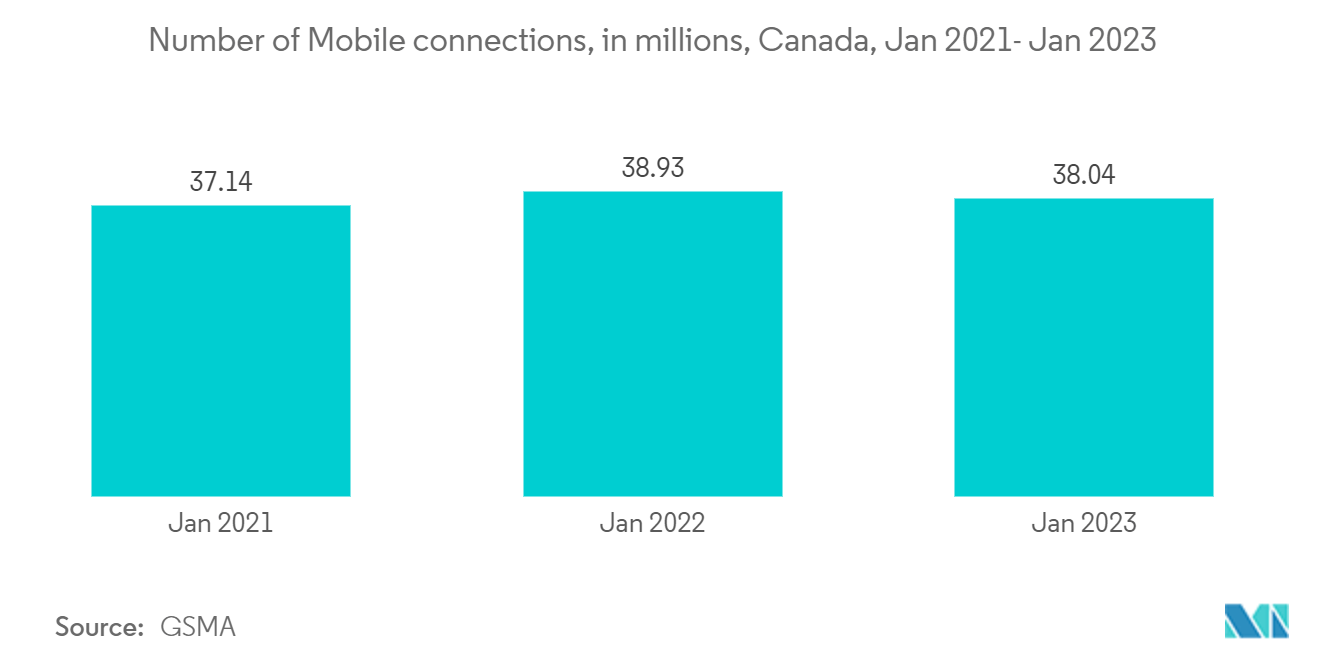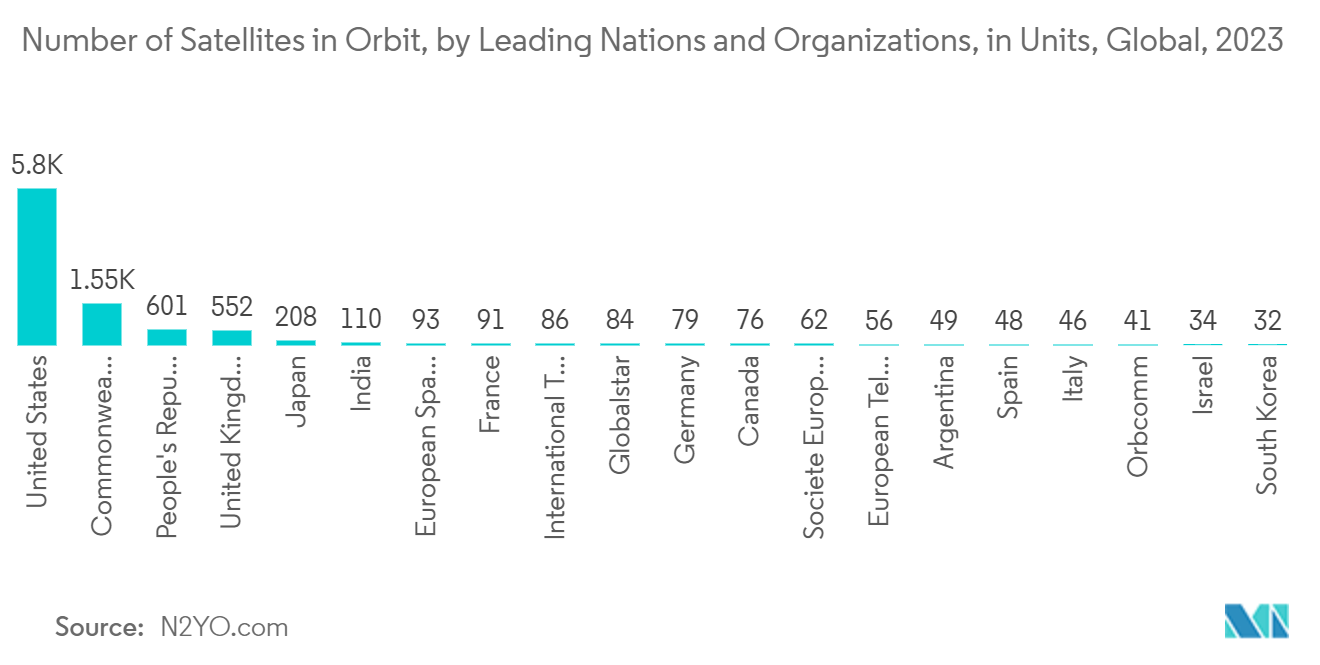Market Trends of Canada Geospatial Imagery Analytics Industry
Increasing Adoption of 5G in Canada is Boosting the Market Growth
- The emergence and deployment of fifth-generation (5G) wireless technology have revolutionized the digital landscape, offering unprecedented data speeds, low latency, and enhanced connectivity. As one of the frontrunners in 5G implementation, Canada has witnessed a surge in technological advancements and opportunities. One such sector experiencing significant growth is geospatial analytics. Geospatial analytics leverages location-based data from various sources, such as satellites, sensors, and mobile devices, to gain valuable insights and make informed decisions.
- One critical way geospatial imagery analytics transforms the internet landscape is through optimizing network infrastructure. By analyzing geospatial data, service providers can identify optimal locations for network towers, ensuring maximum coverage and minimizing connectivity issues. This is particularly beneficial in remote and rural areas, where connectivity has traditionally been challenging.
- Moreover, geospatial imagery analytics plays a crucial role in planning and implementing 5G networks. The high-frequency nature of 5G signals requires a dense network of small cells. Geospatial data can help identify the best locations for these cells, considering factors such as building density and terrain. This ensures efficient network deployment and robust connectivity.
- In addition to enhancing network infrastructure, geospatial imagery analytics also improves the user experience. Service providers can optimize network performance based on usage patterns by analyzing user location data. This leads to improved service quality and customer satisfaction.
- Furthermore, geospatial imagery analytics is facilitating the development of smart cities. By integrating geospatial data with Internet technology, city planners can create more efficient and sustainable urban environments. For instance, geospatial data can help optimize traffic management systems, reducing congestion and improving mobility.

AI will Drive the Market
- Canada has always been a frontrunner in implementing and advancing new earth observation satellite system technologies. Among the key areas Canada has significantly contributed to are high-resolution imaging, SAR, hyperspectral imaging, CubeSats, AI/ML, and data analytics. These advancements have facilitated improved monitoring, analysis, and understanding of Earth's systems, benefiting industries, scientific research, and environmental management.
- One of the key advancements is the development of high-resolution imaging systems. Canada has been at the forefront of this technology, with companies like MDA (MacDonald, Dettwiler, and Associates) leading the way. These satellites employ sophisticated optical sensors and advanced image processing techniques to capture detailed images of the Earth's surface. High-resolution imaging enables accurate mapping, urban planning, disaster management, and resource exploration.
- Moreover, the government is continuously increasing investments in its satellites. Hence, in March 2023, the Canadian government invested USD 6.8 million in developing new Earth observation technologies in several areas. The Canadian Space Agency's Space Technology Development Program (STDP) has awarded 10 R&D contracts to 10 companies.
- Integrating artificial intelligence and machine learning algorithms in geospatial imagery analytics is revolutionizing data analysis and interpretation. These technologies enable automated image processing, feature extraction, and pattern recognition, reducing the time and effort required for manual analysis. Canada has strong expertise in AI and ML, and researchers are applying these techniques to satellite data for enhanced land cover classification, vegetation monitoring, and disaster response.


